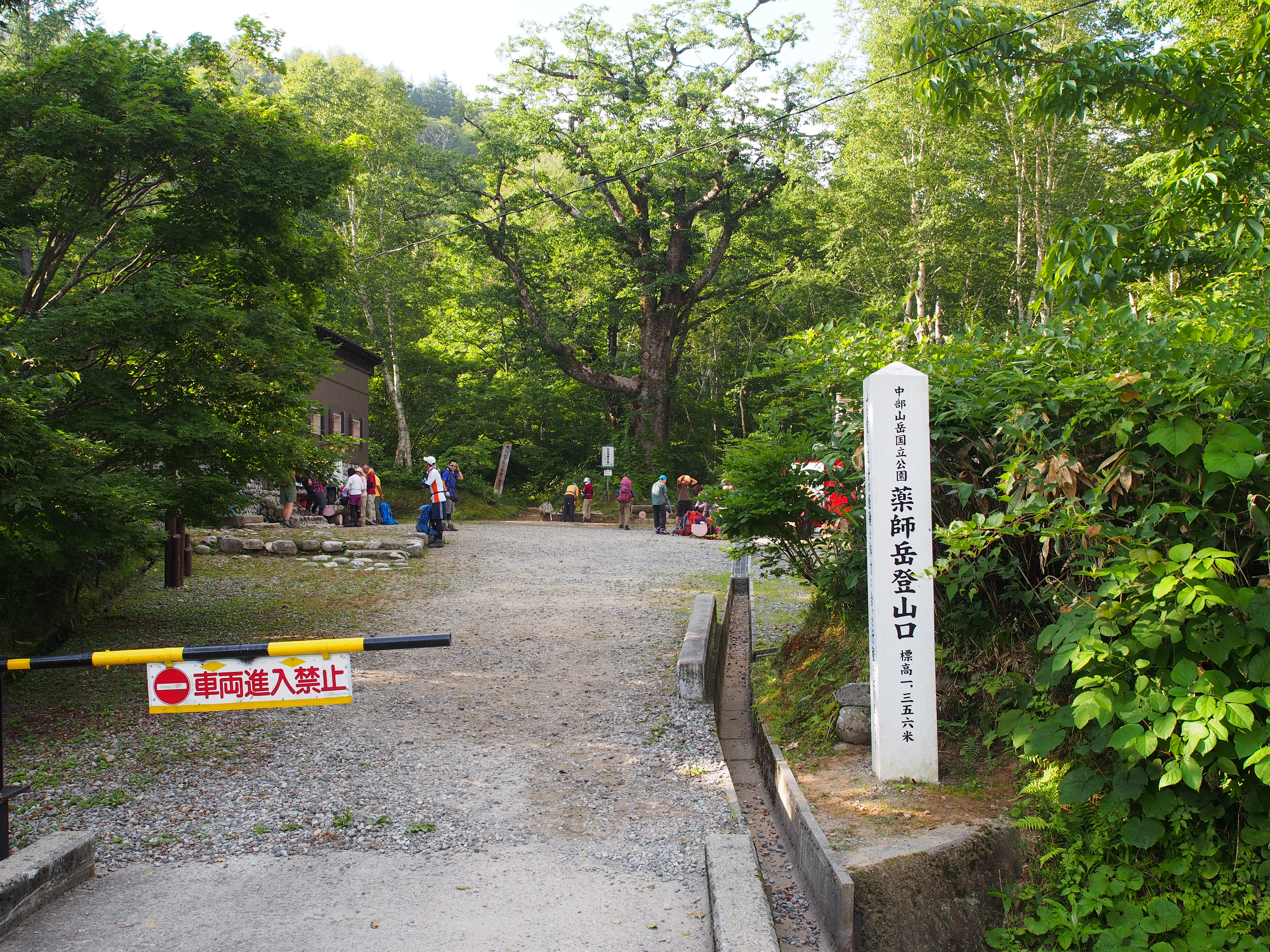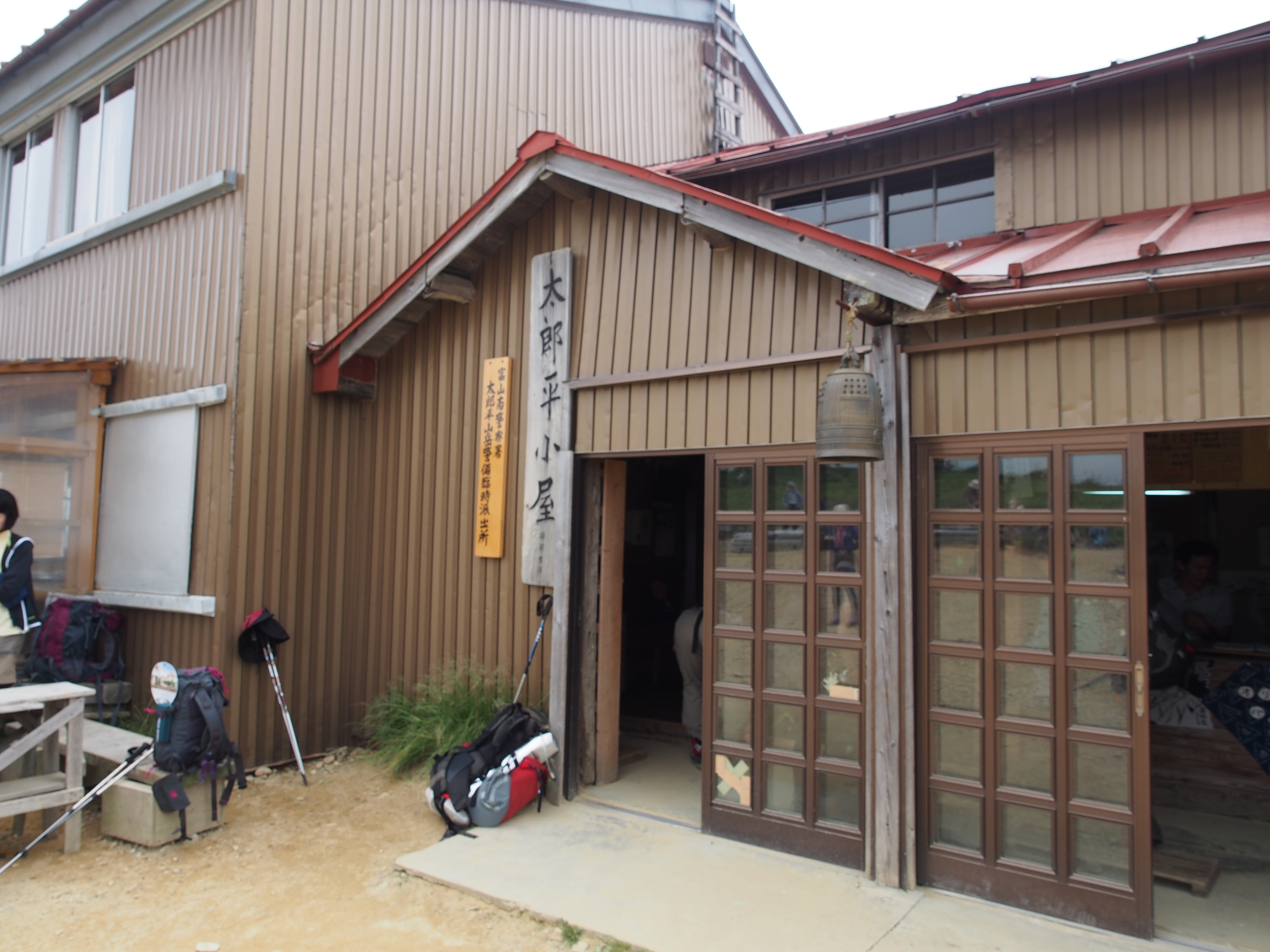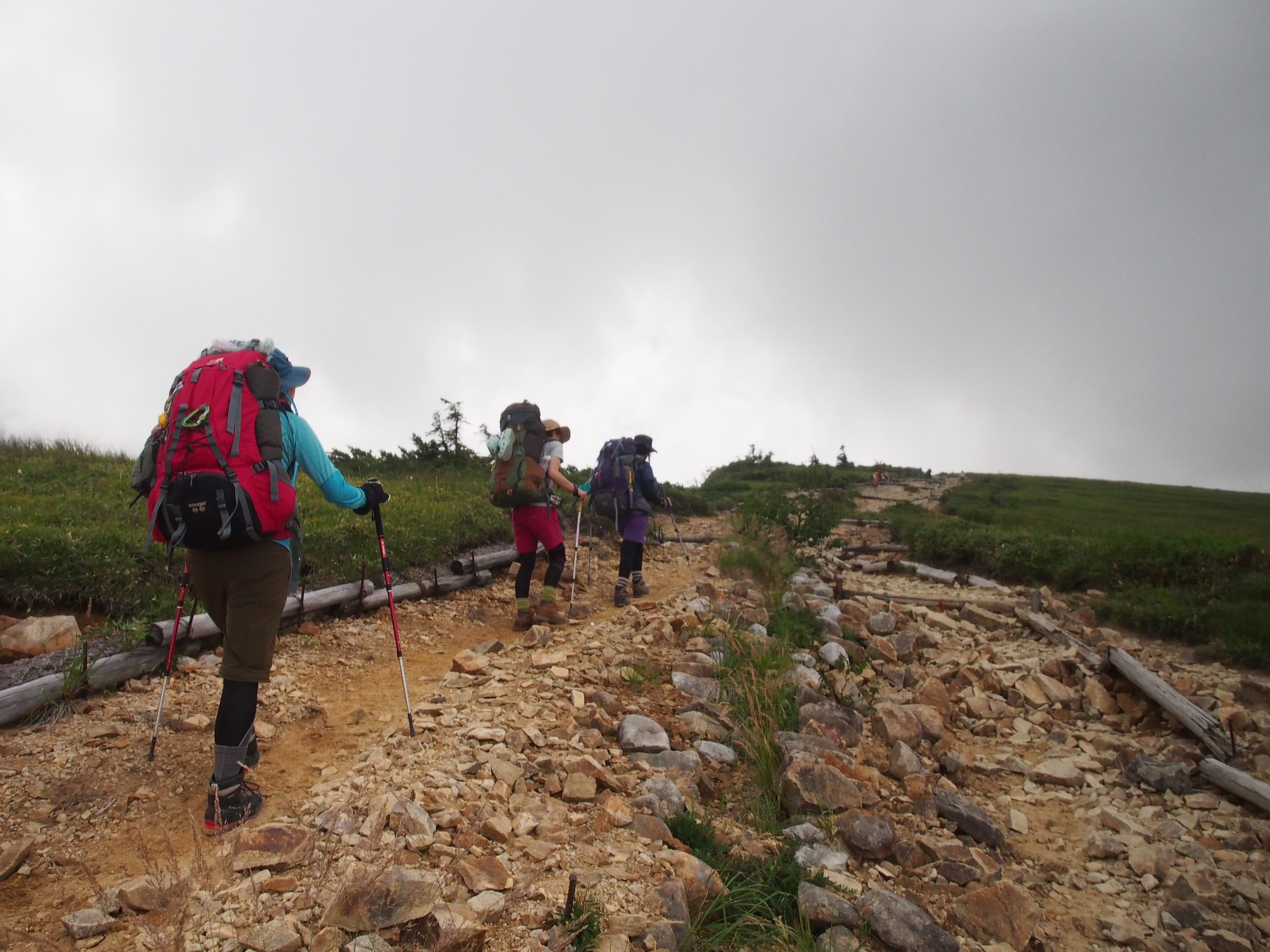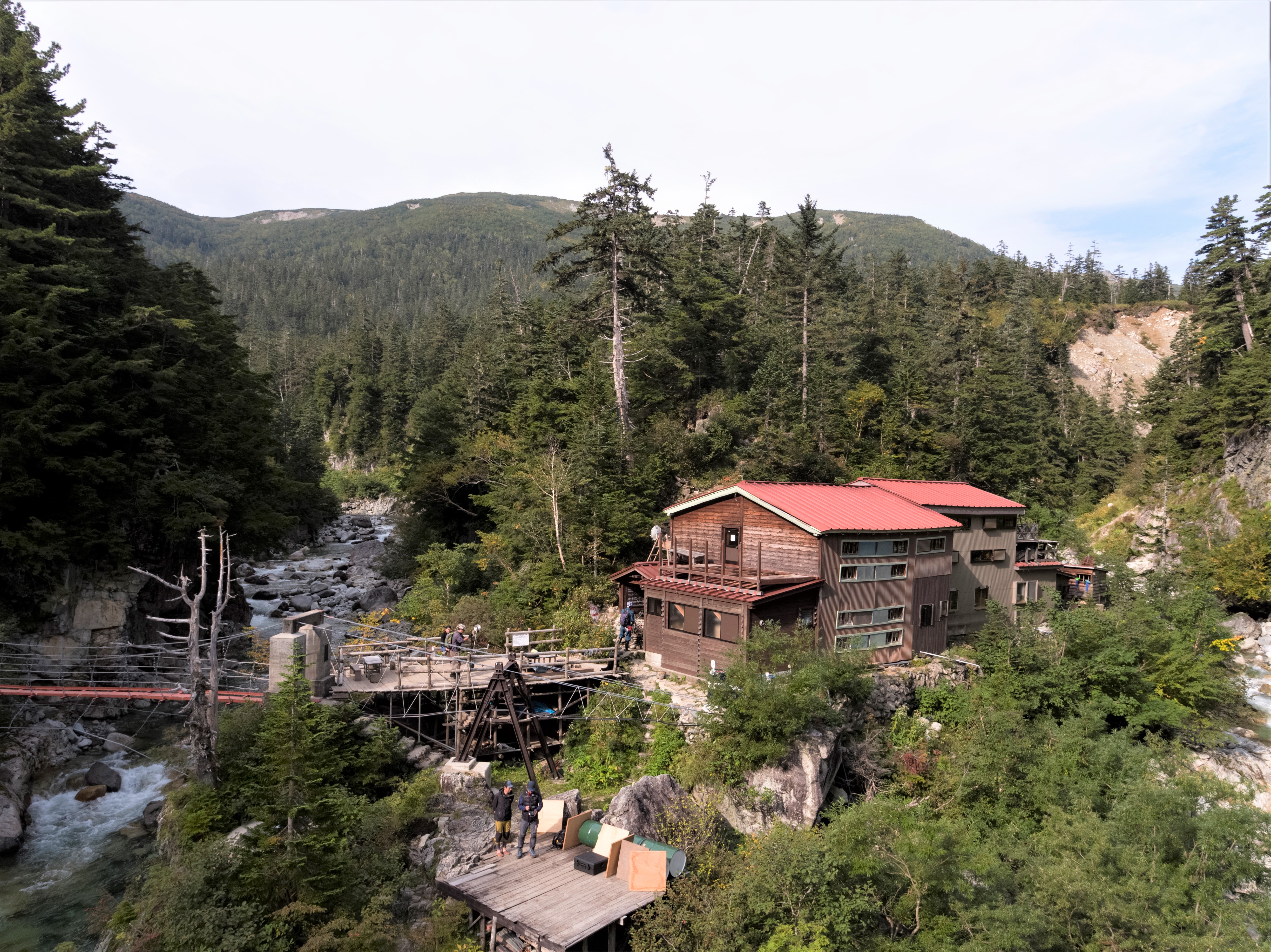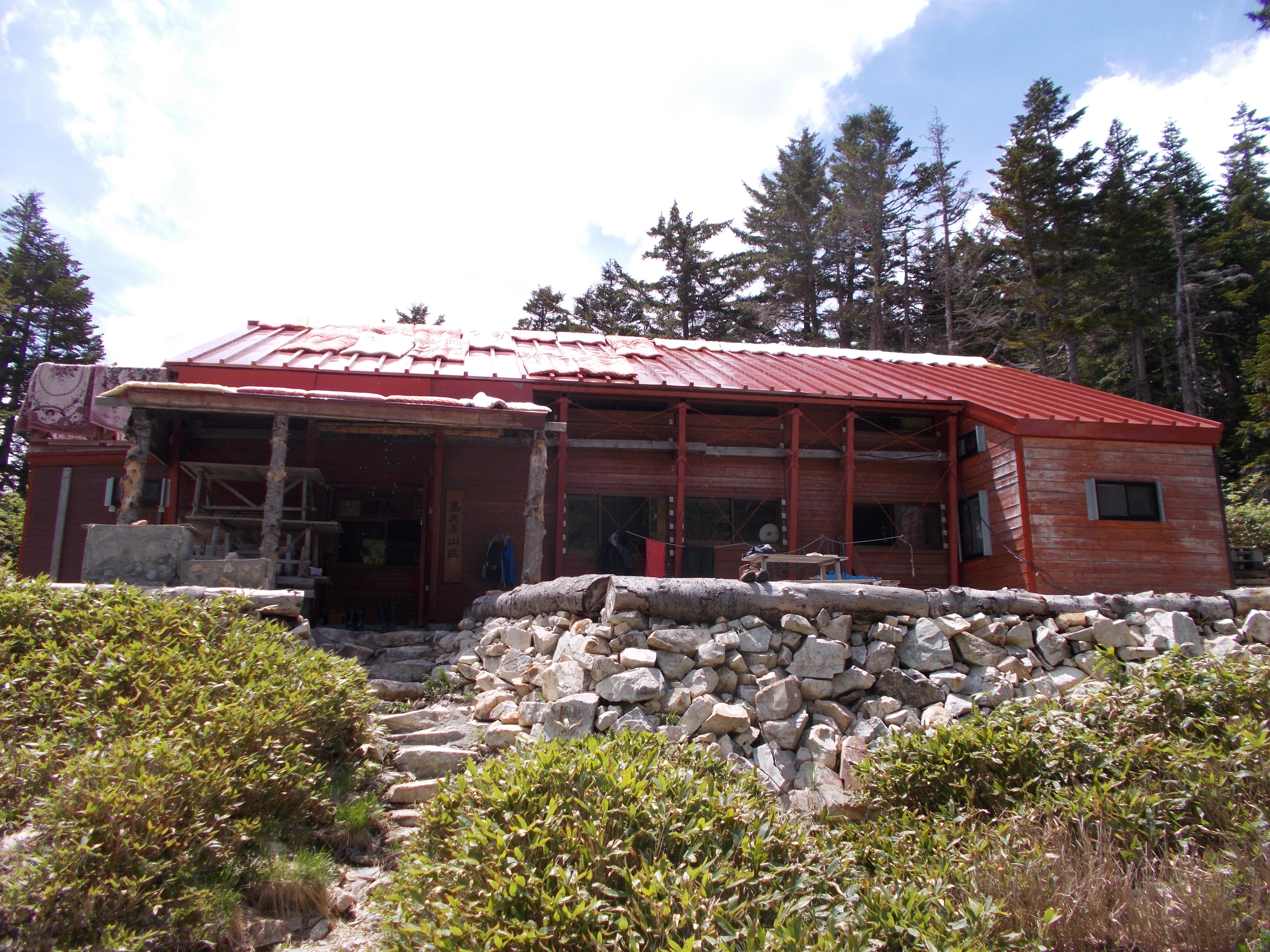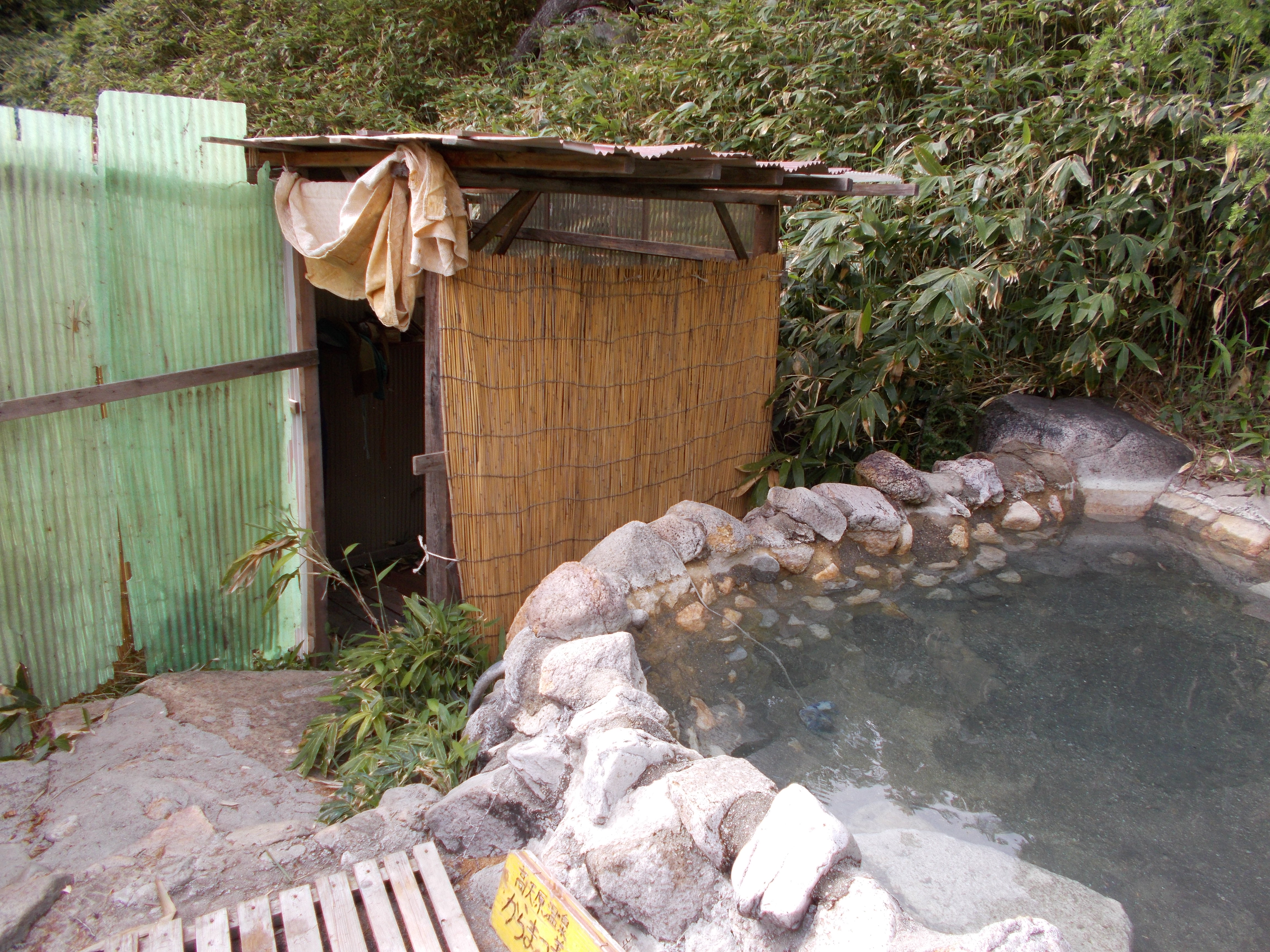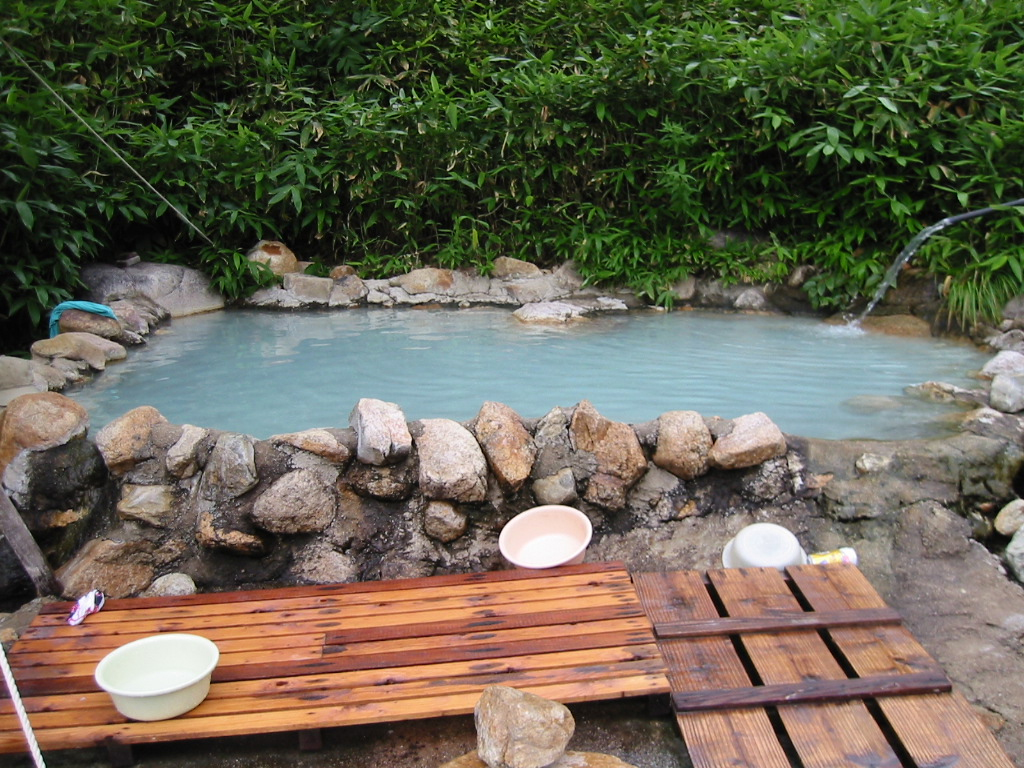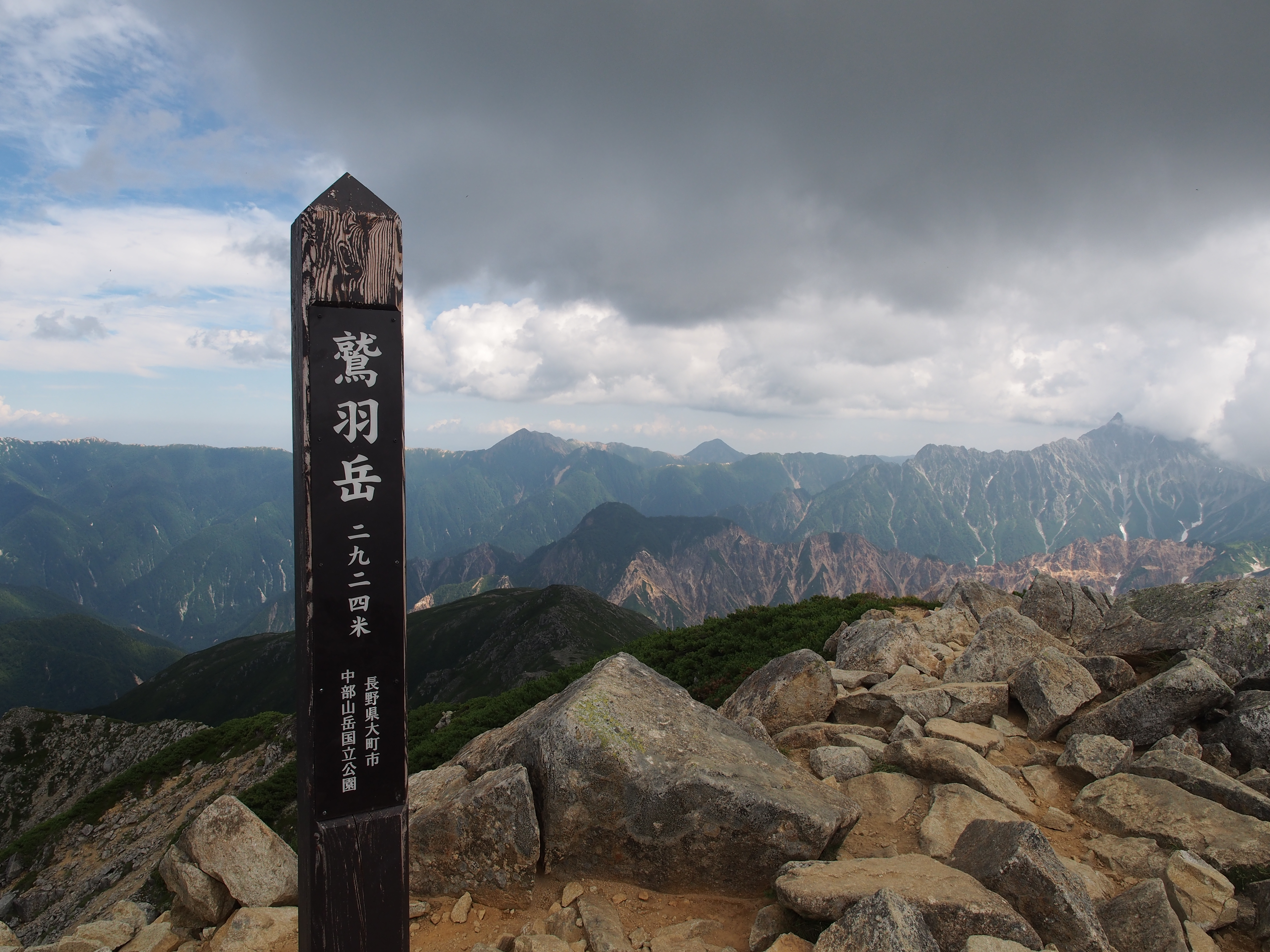Takama-gahara route
Oritate ~ Mt. Taro ~ Yakushi-sawa-koya Mountain Hut ~ Takama-gahara-sanso Mountain Hut ~ Takama-gahara Onsen Hot Spring ~ Iwagoke-nokkoshi ~ Mt. Washiba-dake
Technical level: C
Physical strength: 8
Difficulty: ★★★★
●Hiking Data
Schedule: Three nights and four days
Walking hours: 17 hours 35 minutes
Walking distance: 42.08 km
Cumulative elevation difference: 5249.9 m
Visit Mt. Washiba-dake from the source of the Kurobe river
Takama-gahara, which spreads out at the base of Mt. Suisho-dake in the Hida mountains, is located along the branch of the Kurobe river, Onsen-sawa. During high season, a lot of hikers visit this paradise. Some visit the area to enjoy char fishing. However, do not enter the stream near the source of the Kurobe river without caution. The streams in this area are deep and require great experience.
Mt. Taro


Elevation 2,373m
↓ 2 hours 15 minutes
Yakushi-sawa-koya Mountain Hut

Elevation 1,920m
↓ 5 hours
Takama-gahara-sanso Mountain Hut

Elevation 2,128m
↓ 20 minutes
Iwagoke-nokkoshi
Elevation 2,730m
↓ 1 hour 10 minutes
Mitsumata-sanso
Elevation 2,545m
↓ 30 minutes
Kumono-daira
Elevation 2,551m
↓ 3 hours
Yakushi-sawa-goya
Elevation 1,920m
↓ 1 hour 35 minutes
Taro-daira-goya
Elevation 2,373m
↓ 3 hours 10 minutes
Oritate
Elevation 1,350m
Route Guide
This route takes two nights and three days from the Oritate trailhead to Mt. Washiba-dake. To descend from Mt. Washiba-dake, it is recommended to visit the source of the Kurobe river and go back to the Oritate trailhead via Kumono-daira. Please refer to the North Japan Alps, south part 6, Mt. Washiba-dake.
At the Oritate trailhead, there is a place to replenish your water supply, so make sure that you fill your water bottles up here. Do not forget to submit a hiking registration. Also check your gear at the rest area before you depart. On the left side of the trailhead, there stands a memorial monument for Aichi University student (the thirteen-layers tower). The trail goes into the forest zone, covered by giant Beech. When the altitude grows higher, giant Abies Veitchii or Japanese arborvitae trees appear along the trail. The trail up to the triangulation point bench is steep uphill, therefore make sure that you keep a steady pace. From the bench, Toyama-plain and Arimine lake can be seen.
After passing the forest zone, the trail comes to a platform like highland. The trail is gentle slope with a wide ridgeline. Pinus Pumila and Chishima-zasa cover the road. On your left, you can view Amida-gahara and Mt. Tsurugi at a distance. A variety of alpine plants such as Avens, Nikko Hemerocallis, Narthecium Asiaticum, Iwashobu and others are in bloom around ponds and the view entertains you. Mt. Taro will be reached when Mt. Yakushi-dake on the upper left corner of your sight grows close. It takes about 5 hours to get here. It is ideal to stay at Yakushi-sawa-koya Mountain hut for the first night, however, if that is too hard, you may stay at Taro-koya Mountain hut for the first night and extend the trip to three nights and four days (to Mt. Washiba-dake).
From Mt.Taro, head out to Yakushi-sawa. Descend Mt. Taro as you go around the base of the mountain. The trail turns into a boardwalk; however is wet and slippery so caution must be practiced. The first crossing point is reached at the end of the downhill. The second crossing point will be reached as you follow the stepping stones. The trail becomes steep from there. When you reach the field of Bamboo Grass, the trail becomes a boardwalk. The descending slope is gentle. There are benches set here and there. Take a break occasionally. The stable bridge appears at the third crossing point. After passing the forest of Abies Veitchii, the trail enters into the field of Bamboo Grass and Kabekke-gahara will be reached. Kumono-daira is located above the native forest in front of you. Descend for a while till you hear the sound of water, then Yakushi-sawa-koya Mountain hut, the hut for the night, will be reached. The hut stands in the area of the source of the Kurobe river. Many hikers depart from here to Kami-no corridor or Akagi-sawa. Also, some visit here for char fishing.
On the next day, depart to Takama-gahara Onsen hot spring. Proceed on the trail, called Daito-shindo, along the Kurobe river, for the first hour. When the water level is high, some things require strong caution. Make sure that you obtain the most updated information before you depart Yakushi-sawa-koya Mountain hut. Follow the signs to Takama-gahara. Ascend while enjoying the beauty of the Kurobe river. Follow the sign “A stream” on the riverside big rocks. Then cross the stream to B and C. The trail is unstable so caution must be employed. Proceed on the trail as you traverse the middle of the mountain and you will reach the final crossing point to “D stream.” After this point, the trail becomes very steep. Proceed towards Takama-gahara.
There are boardwalks around Takama-gahara pass. After passing this point, the trail enters into an area where wetlands or grass fields spread out. You may enjoy views, which remind you of forests in Northern Europe. In about one hour, you will arrive at Takama-gahara-sanso Mountain Hut, known as the hut of lamps. Takama-gahara Onsen hot spring, the famous open-air bath, is 20 minutes away from the hut. It is recommended that you stay at Takama-gahara-sanso Mountain Hut.
From the hut, ascend the hill, which may be covered by sunshine on sunny days. This might be one of the easiest hiking trails in the area around the source of the Kurobe river. Suisho-pond can be found on the way. A visit to the pond is a 10-minute round trip from the trail. The pond dries up sometimes. The trail is fairly easy to hike on for a while. Iwagoke-nokkoshi is reached when the white sign comes in sight in the middle of the mountain. It takes about 1 hour and 10 minutes to Mt. Washiba-dake from here. The trail becomes a gravel uphill, but the view is beautiful. Do not slip on the traversing road where the rope is set. There is a 360 degree view available at the top of Mt. Washiba-dake. Views of the Hotaka mountains, Mt. Tate-yama, and the Hakuba mountains are fantastic. The area of the source of the Kurobe River beyond Kumono-daira can be seen as well.
